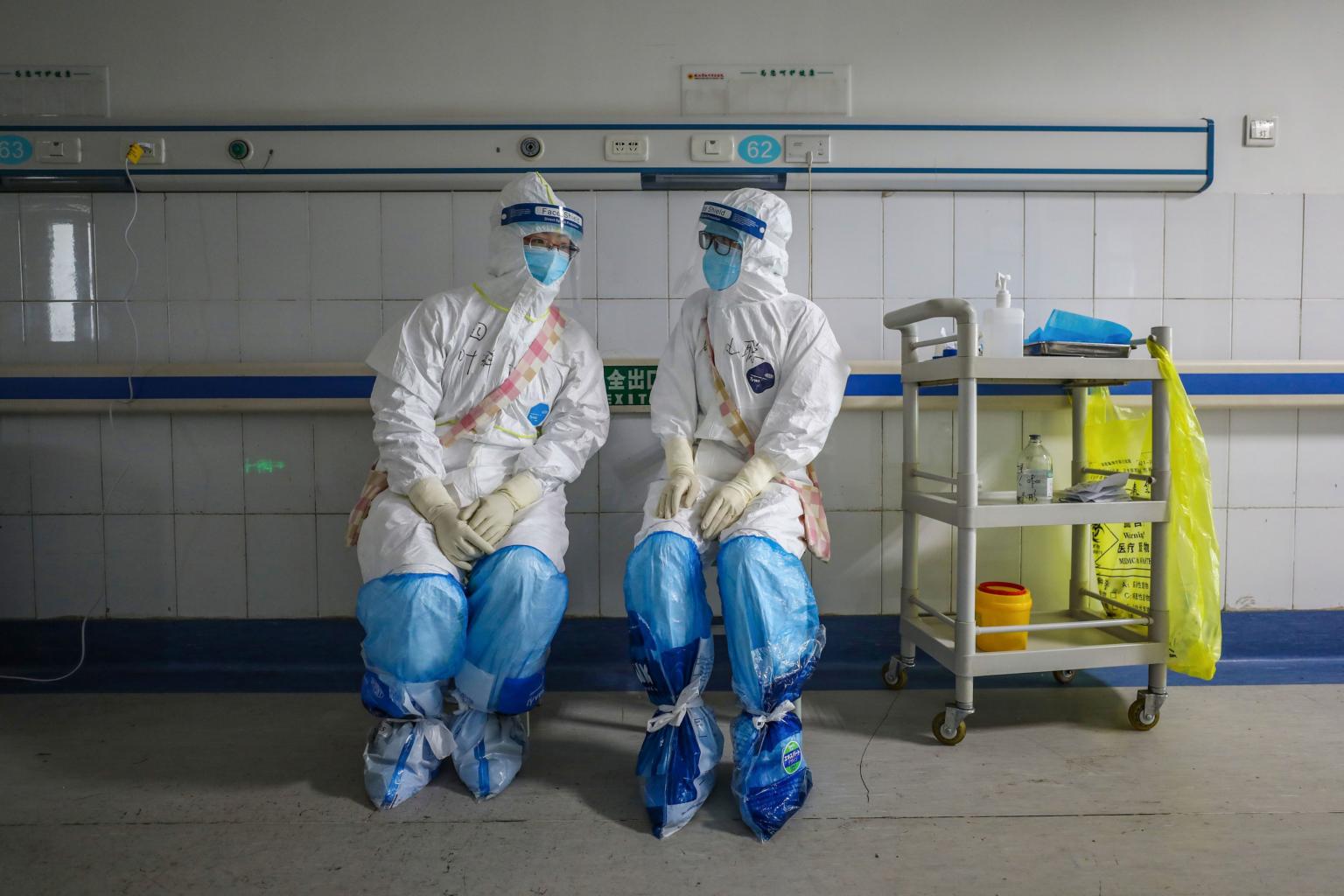Coronavirus infections among Chinese medics more widespread than reported, research shows
Sign up now: Get ST's newsletters delivered to your inbox

In a photo taken on Feb 16, 2020, medical staff members talk at the Wuhan Red Cross Hospital in Wuhan.
PHOTO: AFP
By Ma Danmeng and Denise Jia
Follow topic:
WUHAN (CAIXIN GLOBAL) - The biggest study yet of the Covid-19 epidemic found that almost twice as many Chinese medical workers have been infected as officially reported by the government, though the research didn't turn up the source of the novel coronavirus.
A team at the Chinese Centre for Disease Control and Prevention (CDC) studied 72,314 cases as of Feb 11, among which 44,672 were confirmed cases of coronavirus.
The sweeping study was published on Monday (Feb 17) by the Chinese Journal of Epidemiology.
The researchers found that 3,019 medical workers had been infected, among whom 1,688 patients were in severe or critical condition.
As of Feb 11, the government acknowledged more than 1,700 medical workers nationwide as confirmed with the disease, almost 90 per cent of them in Hubei, according to Chinese National Health Commission deputy chief Zeng Yixin at a press conference last Friday.
The overall death rate among confirmed cases was 2.3 per cent, the CDC researchers found. In Hubei province, the epicentre of epidemic, the pace of fatalities was 2.9 per cent, compared with 0.4 per cent in the rest of the country, according to the paper. For patients more than 80 years old, the fatality rate can be as high as 14.8 per cent, the study found.
Doctors and nurses in Wuhan have faced the highest risk of infection, especially in early January, the study found. In the first 10 days of January, nearly 40 per cent of infected medical workers progressed to severe condition before the rate declined in February.
Among the 1,688 severely ill medical workers, 64 per cent were in Wuhan and 23.3 per cent in other areas in Hubei, according to the paper.
Among patients in critical condition, 49 per cent died, the study found. According to the National Health Condition, patients in critical condition experience respiratory failure requiring mechanical ventilation, or shock, or other organ failures requiring intensive care. As of Feb 11, 4.7 per cent of infected patients across China were in critical condition, the researchers found.
The study reported that an additional 13.8 per cent of patients were in severe condition, meaning difficulty breathing, low oxygen uptake, multiple lung lesions or other clinical circumstances requiring hospitalisation, according to the NHC guidelines.
The study didn't provide details on how medical workers were infected or why protective measures failed. Caixin's in-depth reports showed that in the early stage of the epidemic, uninformed doctors had close contact with infected patients without enough protection and that shortages of protective supplies and substandard gear also left workers exposed to infection.
The paper provided different findings from another paper published a week earlier.
The new study said there is no evidence of "super-spreader" incidents at any hospitals. The earlier paper, produced by a team led by Zhong Nanshan, a Chinese epidemiologist who discovered the Sars coronavirus in 2003, said it could not preclude the presence of "super-spreaders", defined as one person who transmits infection to more than 10 others. The earlier study covered about 1,000 cases from Jan 1-29.
Early cases suggest that the Covid-19 virus may be less damaging than the Sars and Mers coronaviruses, but as the number of cases increased rapidly, the new virus appears to be more contagious than the two others, the researchers said.
Before Dec 31, almost all cases were in Hubei, but within just 10 days, patients were reported in 20 provinces and in the following 10 days it spread to a total of 30 provinces, the researchers said.
The epidemic curve is showing signs of slowing, indicating measures such as restricting the flow of people, reducing human contact and disclosure of epidemic information at a high frequency through multiple channels may be helping to contain the outbreak, the paper said.
Some important questions remain unanswered, including the identification of animal hosts of the virus, infective period, transmission routes, effective treatment and prevention method, the researchers wrote.
This story was originally published by Caixin Global.

